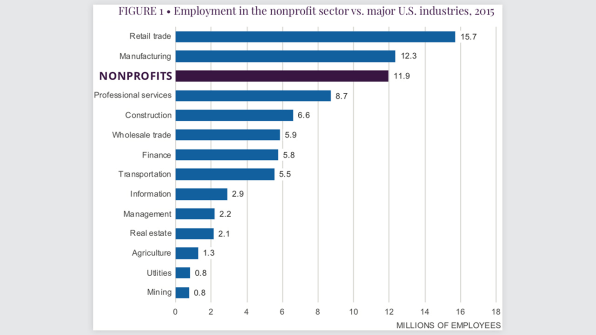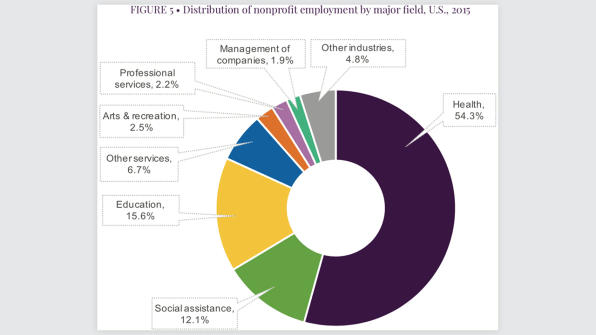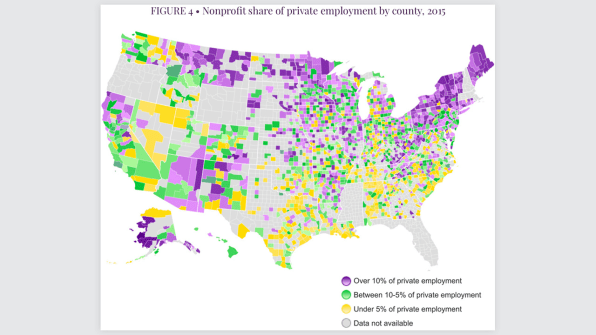The nonprofit sector is the third largest employer in America
Nonprofits talk a lot about their missions to do good and change the world, but the collective might of these groups has strengthened quality of life within the U.S. another way: As a sector, the nonprofit world represents the country’s third largest employer.
Nearly 12 million people work for various social good groups. By comparison, just over 12 million labor in manufacturing, and another 16 million earn paychecks from retail trade. Among nonprofits, more than half of those jobs are in health care, with social services and education also accounting for a large share.

These jobs actually aren’t primarily funded by what is typically thought of as philanthropy dollars, money that must be continuously donated by large benefactors. Most are supported both through government funding and commercial income from fees and charges.
A recent report from the Johns Hopkins Center for Civil Society Studies’ Nonprofit Economic Data Project shows that these jobs are generally sustainable. They have also continued to grow as other fields struggle: Manufacturing jobs may be shrinking and moving overseas, and retail shopping may be moving online, but boomers are still aging and living longer while younger generations sadly suffer through drug abuse epidemics like the opioid crisis.
“We’re focusing on employment because it’s the best indicator of the not only the economic impact but the social impact of the sector,” says report author Lester Salamon. People in these fields may make less than bankers or programmers but ultimately provide a harder to measure social value as part of America’s social safety net. “This is a sector in which the contribution that it is making to people’s lives is better reflected in employment than it is in just in raw dollars.”
Researchers at Johns Hopkins have been trying to highlight that fact for about a decade. (This is the 46th statistics backed bulletin they’ve released during that time, and the title couldn’t be more blunt: “Nonprofits: America’s Third Largest Workforce.” ) “This is a sector that has activity in many different industries, particularly in health and education and social services,” he says. “And when you see the data that’s reported on those fields, it is easy to forget that a big chunk of it comes from the nonprofit sector.”

Part of the problem is that the Bureau of Labor collects industrywide employment data but doesn’t parse what economic model is powering those jobs. Nonprofit hospitals, for instance, are largely supported by a blend of Medicare and Medicaid, payments made from insurance companies, and patient out-of-pocket costs. The ratios of federal coverage to private expenses are different for social services and education, but there’s definitely a blend. By Salamon’s estimate, traditional philanthropic giving only makes up about 10% of all nonprofit funding.

According to the report, nonprofits now provide more jobs than manufacturing in more than half of states. The sector also accounts for more than 10% of all employment in many places, too, and at least 5% or more of the total workforce in every state except Nevada. To help people understand the local impact, Johns Hopkins has also released a web app called Nonprofit Works , which allows users to compare employment levels, industries included, and wage trends on state or county levels.
Salamon considers this an important economics lesson–cutting federal aide, for instance, often has unintended ripple effects. “Employment is one of those really crucial things that is on the minds of everybody these days,” adds Salamon. “And people forget that this sector is a major employer.”
(50)



